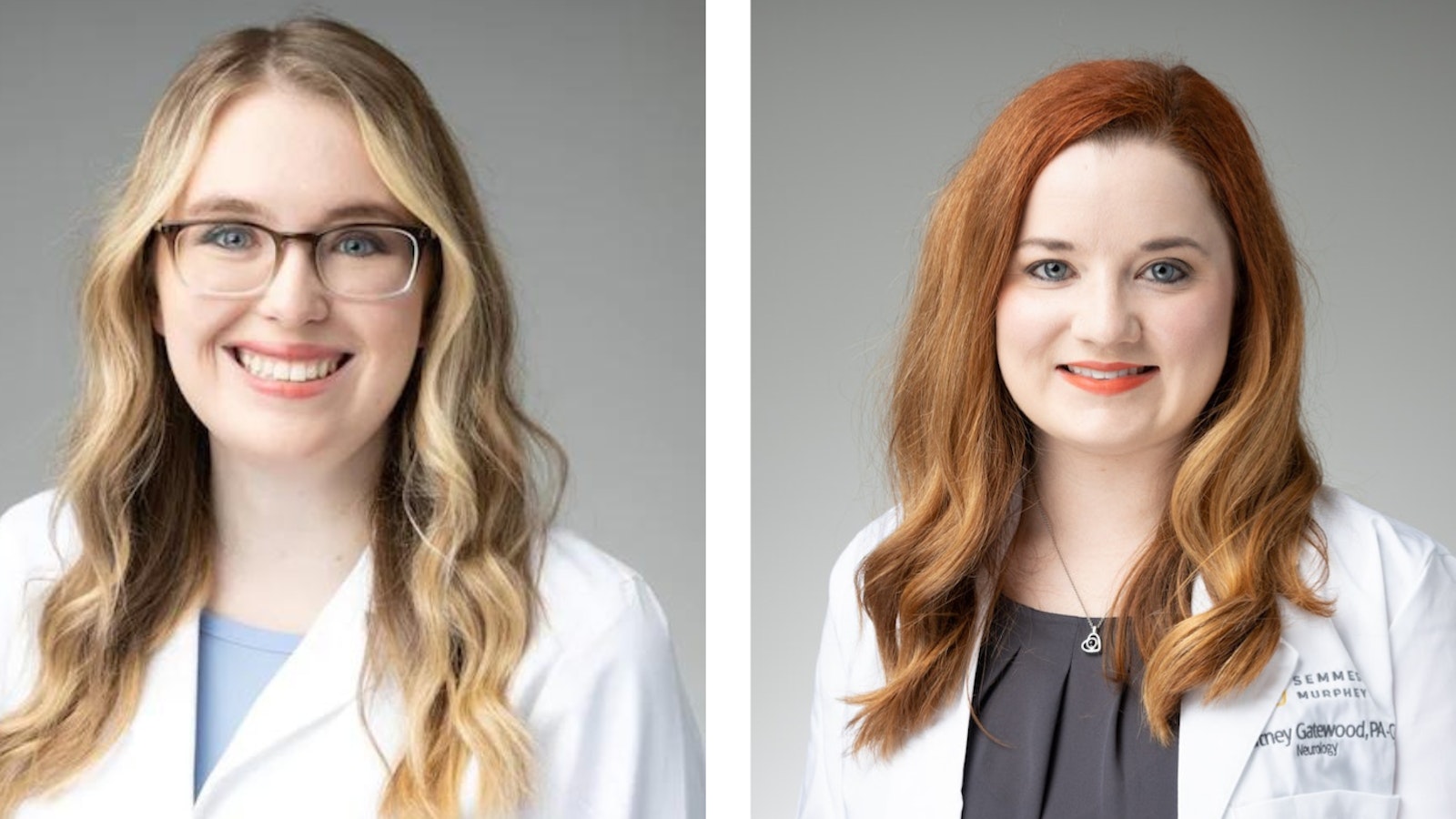Articles
May 24, 2023
Migraine Q&A with Certified Headache Specialists
Headaches are extremely common and most people will experience some kind of headache disorder at some point in their life. One headache disorder many experience are migraine headaches. Semmes Murphey is home to two Certified Headache Specialists, Emily Kunstman and Whitney Gatewood, who have a breadth of knowledge about headache types and treatments. In honor of Migraine Awareness Month, Emily and Whitney sat down to answer some frequently asked questions.

What is the difference between a headache and a migraine?
There are several different classifications of headaches, but it is easiest to classify headaches as either primary or secondary. Primary headaches are much more common and make up most headache disorders. These types of headaches are better explained as being the problem itself rather than being a symptom of something else. Types of primary headaches can include tension headaches, cluster headaches, and migraine headaches. A lot of patients have a mixed bag of headache disorders (e.g. tension headaches and migraine headaches), which is why headaches should be thought of as a spectrum disorder. Migraines vary greatly from person to person.
Secondary headaches are caused by a separate medical condition. This can be thought of as a headache being a symptom of something else, such as a brain tumor or sinus infection. However, headaches from brain tumors are actually not very common (at least as an early symptom). Secondary headaches are more rare.
Does a migraine require medical testing?
In most cases, imaging (CT or MRI) is not necessary for most patients who come in with headaches. However, imaging may be ordered if certain “red flag” signs or symptoms are present. The history from the patient is the most useful way for a medical provider to determine if imaging is needed. Patients can help their doctors and physician extenders by keeping a detailed headache log to bring in to the appointment.
What should a Headache Log include?
Understanding the frequency of your migraines is a crucial piece of the diagnosis and treatment process.
Your headache log should track when you have a headache, its duration and severity, and whether your medication provided relief.
What are the triggers and symptoms of a migraine?
Migraines are the most common type of headache disorder seen in clinics. A migraine disorder can cause multiple other symptoms, aside from the headache, including nausea, vomiting, sensitivity to light, sound, and smells, dizziness, speech disturbances, numbness, tingling, weakness, and visual disturbances.
Migraines can be triggered by certain things such as hormones, stress, or weather changes; however, patients may not have any triggers at all. This is where the headache log can be very useful to try and determine triggers and other patterns of the headaches. Family history can play a large role in migraines as well.
How do you treat a migraine?
We break treatment of migraines into two categories: rescue medicines and preventative medicine.
Rescue medicines are meant to halt the symptoms of a migraine as it happens. In contrast, preventative medicines interacts with signals in the migraine pain cascade, such that the brain doesn't respond to the migraine stimulus. Preventative medications are designed to reduce the number of headache attacks per month.
The type of treatment required depends on the frequency of migraine attacks. If patients have several migraines per month or experience an increase in the number of attacks, they will generally need to go on a migraine preventative. If the headaches are not very frequent, patients will usually only be given a rescue (or abortive) therapy to treat them when they occur.
Generally speaking, a rescue medication should provide relief the first time it's taken. Preventative medicines can take six weeks or more to have an effect, and may require dose adjustments. Our Certified Headache Specialists work closely to find a treatment solution that works best for the individual patient.
Migraines can be extremely frustrating for patients because of the disabling symptoms they can cause, and because a migraine disorder (and other primary headache disorders) is an invisible disease. The good news is there are many treatments available that can make life significantly better for patients who suffer from headaches. Typically, primary care providers can treat headaches; however, if the headache attacks are severe and frequent, patients may need to turn to a provider with more experience in treating headache disorders.
Migraines can disrupt your everyday life, but they do not have to. Request an appointment to see one of the many Semmes Murphey providers.
